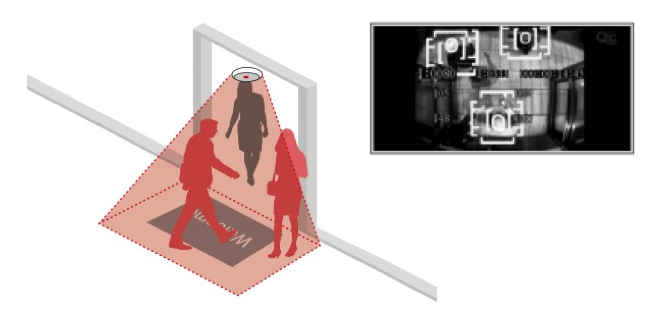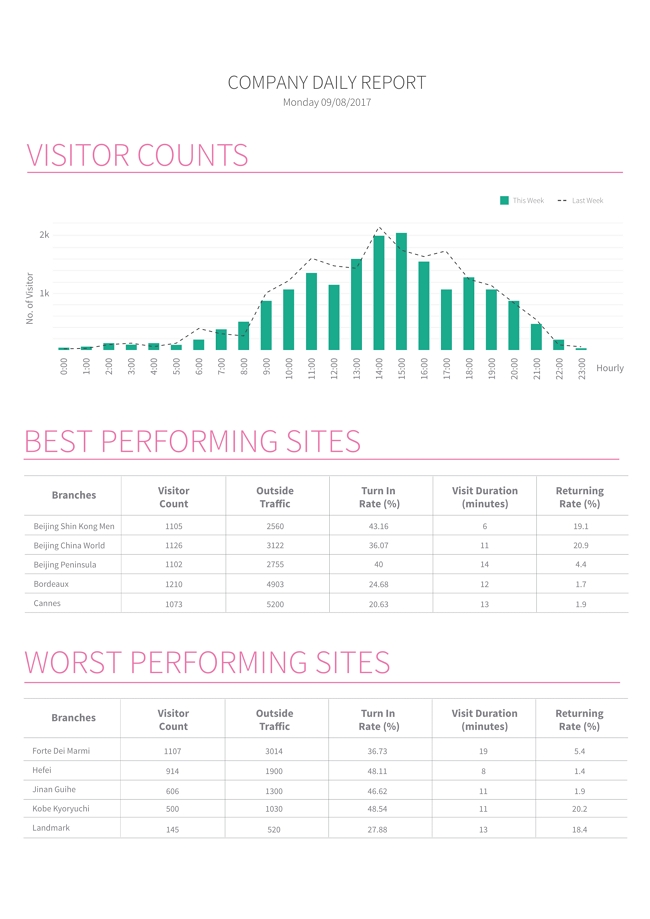A Guide to Retail Traffic Analysis
Introduction
In your POS software, now is what you need for doing retail traffic analysis.
This tool is used by both large and small businesses to determine their success in meeting sales goals and measuring performance. It entails analysing key performance indicators (KPIs) with retail traffic metrics KPIs.
Using them
> You can better control your operations
> Improve your marketing efforts
> Do better rostering
> Examine your opening hours
> Run promotional activities to take advantage of peak traffic periods
> Discover problems in your store
All this leads to increased sales.
Here are the metrics KPIs
Passer-by
This is the number of people who walk by a store. It gives a rough estimate of how many customers a company can get. Because it is influenced by various factors, such as location, foot traffic, and advertising, a small shop has little power to alter this.
Its primary importance in retail is with landlords. They often use it to decide how much to charge for rent because they feel that more people who pass by means more sales potential. The management of a shopping centre often provides such a figure.
A special meter or estimates are often required to get this number in a strip shop. The difficulty with estimates is that they need daily manual calculations.
Inside
This is the number of customers who entered a store.
Obtaining this KPI is simple. It is possible to use a low-cost people-counting meter, which can be found in most electrical stores. They range in sophistication, and the one you pick will depend on your required data, accuracy and how much work you want to do. In practice, a reasonably inexpensive one will do for most shops. With a cheap one, it is more work. A staff member must go to the counter first thing in the morning. Then, take the count of people that came into the shop from the counter and reset the counter. Better meters can store data for more than a month. You can set this task to be done monthly. Some talk to a computer, so you have no work to do.

Conversion of a Shopfront (SFC)
Divided by the number of people passing by, or inside customers, the percentage of people who entered the store.
You can use this KPI metric to determine how many people came into the shop. A store is more successful at attracting potential customers if the STC rate is higher. The shop owner looks at this number to see how much has changed when they make changes to the shop.
Total and number of sales
This information is available in your POS software's sales reports. The following is what marketers enjoy doing.
The average value of a transaction
You get this by dividing the day's total sales by the number of sales. Marketers use this to determine the daily average transaction value. They then use this metric to track your sales performance over time. Using this, they can set realistic sales goals, which businesses set as budgets.
Average profit per transaction
Marketers rarely get profit figures, so this is a rare practice. Few want to advertise their profit too much to strangers. But getting it is easy for you. You are not telling anyone. It is more meaningful to the business. We suggest using the average profit per transaction; Once more, this data can be determined through your POS software.
So we move to the following important KPI in retail traffic analysis.
Sales conversion rate (SCR)
It compares the number of Inside customer traffic to the number of transactions processed.
A high rate indicates that you are making good sales from foot traffic.
A low number could suggest that you need more staff or different stock to meet the needs of the people in your area. People are coming into your shop, but they are not buying.
Examples in use
Here is a sample report that you will get

Here are some examples of how it works in practice.
> Let's say sales were down 20% this week; if you look at the Passer-by, which is the number of people who passed by, you see that this number is down about 20%. Well, you know that you did nothing wrong in the shop.
> If the shop's front was redone. The Shopfront Conversion, the ratio of inside salespeople to passers-by, has stayed the same. The improved shopfront was ineffective.
> You get outstanding stock at a fair price. Then, you'll see an increase in your sales conversion rate, which is the ratio of the number of transactions processed to the number of inside customers who visit your website. It's good what you brought.
Cost/Reward
This is a tricky question; the price for a people-counting meter ranges from about $200 to $1,000. It can be much more too. It depends on where you want to take it and what it will cost.
Although the benefit is also difficult to quantify, it is said to be worth 1%. If you have a $250,000 gross profit, you should achieve a sales increase of approximately $3,000 by implementing it. It will need extra work; how much depends on the meter. Plus, you will need, say, an hour each month to examine it.
Summary
A valuable tool for retailers is retail traffic analysis. Tracking your retail traffic metrics and making data-driven decisions to optimise your marketing efforts can increase sales.
Please let us know if you are interested in this type of technology or other types of retail analytics software.


